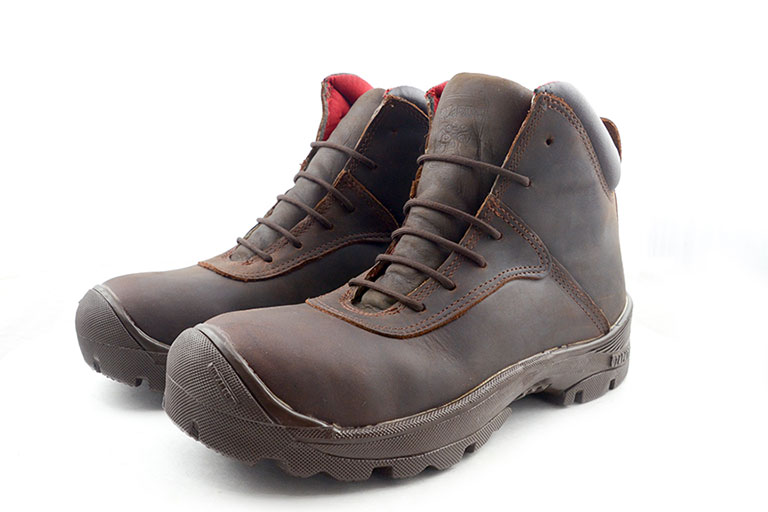In the realm of workplace safety, steel toecaps are a fundamental element of protective footwear that have been a cornerstone of occupational health for over nearly 100 years.
Originally invented in Germany in the early 20th century to protect workers’ feet, steel toecaps slowly reached wider adoption until a rapid increase across the 1970s and 80s as regulations came into force around Personal Protection Equipment (PPE) for construction and heavy industries.
The first designs incorporated a reinforced steel cap over the toes that shielded workers from heavy objects and machinery. Initially, these were rigid and uncomfortable, focusing solely on safety.
Over time, advancements in materials and design has led to ergonomic designs for more wearable steel toe cap boots that maintain safety while ensuring comfort in often physically demanding workspace environments.
Impact on workers
There are still 340 million occupational accidents across the world each year, but countries with stricter regulations around the use of PPE in the workplace have seen reductions in the incidence of occupational injury.
In Germany, measures such as the Occupational Health and Safety Act, which obliges employers to provide PPE such as steel toecaps, have seen the annual number of workplace accidents halved since the 1980s.
Today, toecaps are a cornerstone of occupational safety, evolving with various industries and offering versatile protection against impact and compression hazards, promoting a safer work environment for countless professionals.
 Steel toecaps that meet EN 345 standards can withstand a crush weight of 1500kg
Steel toecaps that meet EN 345 standards can withstand a crush weight of 1500kg
The Anatomy of Safety
Steel toecaps, also known as safety toe caps or steel caps, are an essential feature integrated into protective footwear such as work boots. These caps are constructed using sturdy materials like reinforced steel.
The toecap, which is usually combined with a steel midsole plate to protect against punctures from below, is designed to cover and safeguard the front part of the foot from various occupational hazards such as falling objects, heavy machinery, or accidental impacts.
Work boots must meet the standard established and issued by the International Organization for Standardization (ISO). EN 345 is the safety standard that specifies basic and additional requirements for safety footwear used for general purposes.
This includes, for example, mechanical risks, slip resistance, thermal risks, and ergonomic behaviour.
Meeting this standard guarantees that the reinforced steel toecap can withstand a pressure force of 200 joules. This means that a 20kg object falling from a height of one metre will not injure the foot wearing the EN 345 shoe. The shoe can also withstand a crush weight of 1500kg.
Durable footwear that meets these high standards provides a crucial layer of defence for workers in hazardous environments, helping prevent potential injuries that can result from heavy objects, impact, or compression.
Steel toecaps find utility across a spectrum of work environments, from construction sites and warehouses to manufacturing facilities and heavy machinery operations. Their versatility ensures that workers have a reliable means of foot protection.
With their durability, versatility, and compliance with safety regulations, steel toecaps have become an integral component of protective footwear, allowing workers to carry out their tasks with confidence in the face of occupational hazards.
Images: Wikicommons